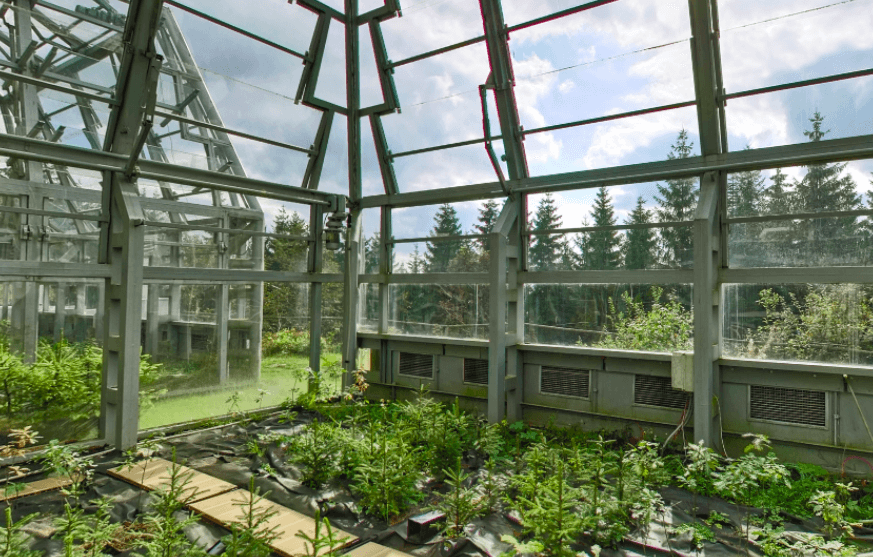What does the term “global change” mean?
We understand global change to comprise a wide range of biophysical, ecosystem and socio-economic changes that alter the functioning of Earth as a system on a planetary scale (changes in climate, land and ocean productivity, atmospheric chemistry, ecosystems). The result is a change in Earth’s ability to support life.
(For details and references, see Global change and changes.)
Is there scientific evidence for the existence of global change?
Yes. Global change is not a matter of faith, but rather of scientific knowledge. It can therefore be evidenced in many ways – the disequilibrium in Earth’s energy balance, rise in greenhouse gas concentrations, increase in ocean temperatures, declining biodiversity, and the like. All these parameters can be mathematically calculated.
What is global climate change?
According to the United Nations Framework Convention on Climate Change (UNFCCC), global climate change is “a change of climate which is attributed directly or indirectly to human activity that alters the composition of the global atmosphere and which is in addition to natural climate variability observed over comparable time periods.” Thus, when discussing global climate change, we are always talking about changes caused by humans.
(For more details on the concept of climate change and other related information, including further references, see Concepts related to global change. Also visit climate.nasa.gov and exploratorium.edu/climate.)
What is climate?
In a broader sense, climate is the condition of Earth’s climate system, which can be described statistically.
In a narrower sense, climate is usually defined as the average weather or, more precisely, as the statistical description in terms of the mean and variability of relevant quantities over a period of time ranging from months to thousands or millions of years. According to the definition of the World Meteorological Organization (WMO), the classical period for averaging these variables is 30 years.
What is Earth’s climate system?
The climate system is a very complex and complicated system consisting of five major components (atmosphere, hydrosphere, cryosphere, land surface and biosphere) and the interrelationships between them.
Is Earth’s climate system constant?
No. The climate system evolves over time. Its development has two causes. Firstly, climate system development is influenced by its own internal dynamics. Secondly, the climate system develops through external factors. Typical examples of external factors are volcanic eruptions, solar changes and anthropogenic activities (primarily involving changes in atmospheric composition and changes in land use).
What role does temperature play in Earth’s climate system?
The average global temperature is the simplest and yet a very useful indicator of climate’s condition.
What is global warming?
Global warming is the term for the rise in ground-level air temperature (at the height of 2 m above the surface), considered as an average over the entire surface of the earth.
Is global warming really happening?
Yes. In the last 40 years, the average ground-level air temperature has increased by 0.6 °Celsius. The rate of increase has gradually risen to two-tenths of a degree Kelvin (a degree Kelvin has the same magnitude as a degree Celsius) per decade.
Is global warming occurring everywhere on the earth?
No. Global warming occurs unevenly. Temperature is increasing the most in the Arctic and during winter.
Why do we use the term global warming when cooling also occurs in some places?
Due to the balance of Earth’s heat radiation. Earth emits less heat into space than it absorbs from the Sun. Therefore, it is heating up on a global scale.
How big is the difference between heat gains and losses?
The difference is approximately one watt per square meter of Earth’s surface.
What was the thermal balance of Earth like in the past?
In past millennia, it was nearly balanced.
What is causing the current thermal imbalance?
It is caused by increased (and still growing) concentrations of greenhouse gases in the atmosphere.
Why are concentrations of greenhouse gases rising?
Concentrations of greenhouse gases are increasing especially as a result of fossil fuel combustion, but also due to deforestation, soil degradation, and agricultural activities generally.
What happens with the excess heat?
Earth retains the excess heat. At least 90% warms the oceans and only a few per cent contribute to the rise in air temperature. This is the reason why the air temperature over the last hundred years has increased by “only” 0.8 °C.
Why can we not just ignore the temperature increase of 0.8 °C?
Because the temperature of the earth is similar to that of the human body. An increase of 0.8 °C is a serious problem, and an increase of 5 °C can be lethal for humankind.
Why is the air temperature increase of 0.8 °C such a severe problem?
Because even a small change in average temperature causes a significant change in the occurrence of different types of weather. This has serious consequences for human and natural communities that developed under the considerable stability of climate conditions prevailing from the end of the last ice age.
These impacts concern the availability of water, agricultural productivity, productivity of forests and fisheries, occurrence of excessive heat or humidity, generation and spread of toxic air pollution, geographical spread of diseases, and damages from storms, floods and inundations, droughts and fires.
In future, we may also face loss of land as a result of rising sea levels, as well as increasing expenditures to enable the continued functioning of our technical systems under previously unseen conditions, new “migration of peoples”, accelerated extinction of species and disappearance of entire ecosystems, and geochemical disruption to oceans.
Disruption of the climatic characteristics upon which today’s territories (often populated to the limits of their bearing capacity) are completely dependent causes global change.
What is the main subject of CzechGlobe’s research?
The research is aimed primarily at the dynamics of movement of greenhouse gases in the boundary layer of the atmosphere, the nature and dynamics of the ecosystems’ carbon cycle, GC effect on controlled ecosystems, climate prediction on a regional scale and evaluation of the social impacts of GC including the prediction of risk management.
For more information on the basic concepts of global change (Kyoto Protocol, El Niño, etc.), refer to the glossary of the AR4 Synthesis Report 2007.




